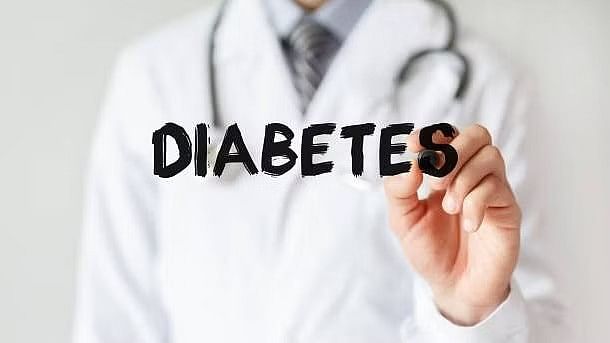
Compared to the 1990s scenario, the number of diabetics has almost doubled both among men and women in India, but the treatment coverage has expanded only marginally.
Credit: iStock Photo
New Delhi: India houses the world’s largest number of diabetic patients, but fewer than three in 10 diabetics currently receive adequate treatment, says new research, pointing to large gaps in diagnosis and effective treatment.
Worldwide an estimated 83 crore adults had diabetes, a substantial increase of 63 crore from 1990. Of these, over a quarter (21.2 crore) are in India followed by China (14.8 crore), according to the study that appeared in the Lancet on Wednesday ahead of the world diabetes day.
Compared to the 1990s scenario, the number of diabetics has almost doubled both among men and women in India, but the treatment coverage has expanded only marginally.
Over 21 per cent of women and 25 per cent of men received treatment in 1990. Three decades later the numbers rose to 28 per cent and 29 per cent respectively in 2022.
“Many younger people have an inertia in taking medicines after being detected with diabetes. People are casual and refuse medicines. We need to be more vigilant to reduce the mortality and morbidity due to diabetes,” Ranjit Mohan Anjana, an endocrinologist at Madras Diabetes Research Foundation and one of the co-authors of the study told DH.
Worldwide over 44.5 crore adults aged 30 years and older with diabetes (59 per cent) did not receive the treatment in 2022, three and a half times the number in 1990.
Nearly 30 per cent of those with untreated diabetes (13.3 crore) were in India. This is more than 50 per cent than the next largest number of people with untreated diabetes in China (7.8 crore) as treatment coverage was higher in China than in India.
Last year an independent assessment by Indian researchers had placed the national prevalence rate at 13 per cent, which is much less than 23.7 per cent in women and 21.4 per cent in men as per the Lancet study. This, according to Anjana, is due to a difference in methods used in the two assessments.
“The new study used HbA1C, while our national prevalence data was based on blood sugar values. If we use blood sugar levels, the change since 1990 is from about 7 per cent to 13 per cent,” she said.
Researchers said the findings show “an expanding inequity” of diabetes in the world. The largest increases in diabetes prevalence have occurred in the low-income and middle-income countries, while the largest improvements in treatment have occurred in high-income countries.
“Given the increase in life expectancy, we can’t escape diabetes. The aim should be to remain free from diabetic complications like heart attacks, kidney diseases and eye problems,” said V Mohan, who heads the Madras Diabetes Research Foundation.
“Given the disabling and potentially fatal consequences of diabetes, preventing diabetes through healthy diet and exercise is essential for better health. Our findings highlight the need to see more ambitious policies, especially in lower-income regions of the world, that restrict unhealthy foods, make healthy foods affordable and improve opportunities to exercise,” Anjana said.
Conducted by the Non-Communicable Disease Risk Factor Collaboration (NCD-RisC) jointly with the World Health Organisation, the study is the first global analysis of trends in both diabetes rates and treatment in over 150 countries.
Researchers used data from over 14 crore people aged 18 years or older from more than 1,000 studies in populations of different countries.
The authors used statistical tools to bring all the data across different years, ages and countries together, and estimate diabetes rates and treatment in a way that enables comparisons across countries.
One unusual finding of the study is a discovery that diabetes rate amongst women in Pakistan rose from 9.0 per cent in 1990 to 30.9 per cent in 2022, the largest increase across all countries.
Besides India and China, other countries with high diabetes burden are Pakistan (3.6 crore) Indonesia (2.5 crore) and Brazil (2.2 crore).
